B-- Breakfast L-- Lunch D-- Dinner
-
Day 1 Lhasa Arrival
Welcome to the roof of the world! You will be picked up by local tour guide at the airport hall or train station, then be escorted to your hotel in Lhasa city in a private vehicle.
After arrival at your hotel, the rest of the day is free for you to explore the local areas and acclimatize yourself to the air, temperature and high altitude of Lhasa.
High Altitude Acclimation Tips:1) go for some leisure walking to acclimate the high altitude but avoid strenuous activity after arrival; 2) you'd better not have bath, in case of catching a cold; 3) drink more water, and have some fruit; 4) have a good rest...
Accommodation: Stay overnight in Lhasa.
-
Day 2 Lhasa ( B )
Start today’s Lhasa exploration with an exciting visit to the landmark - Potala Palace which is regarded as one of the most beautiful architectural building in the world. You will climb up the palace along the zigzag stone paths with white-and-red walls to the top of the palace where you can not only appreciate the exotic Tibetan-style architecture, but also get a great view of Lhasa’s urban areas, then walk into the inner space of Potala Palace to explore the stately chapels and learn about the history of the palace.
Continuing your exploration, you will then get to Jokhang Temple which is considered as the spiritual heart of Tibetan Buddhism. Each day, there are thousands of pilgrims coming from different places in Tibet to the temple to worship to the Buddha. This temple is also known as the “house of Buddha” because it keeps the precious Jowo Rinpoche, the life-sized (5 foot/1.5m) image of the Shakyamuni at the age of 12. The last site for today’s exploration is the famous Barkor Street. It is a circular and wide street encircling the Jokhang Temple. The local people like to walk on the street for several circles usually in the late afternoon as a daily tradition of pilgrimage. The street also has many shops selling a wide variety of traditional Tibetan goods, religious items and handcrafts.
Tips of today: 1) there are 1,080 steps up to climb to the top of Potala Palace, so don’t walk in a rush, which may cause high altitude sickness; 2) taking photos is not allowed inside the palace; 3) today you will be mainly outside, please bring some water, a hat, sun cream, and sun glasses with you.
Accommodation: Stay overnight in Lhasa
-
Day 3 Lhasa ( B )
After breakfast, you will firstly go to visit the beautiful Norbulingka which used to be the former summer palace of Dalai Lamas in the ancient time, and now is a public park. It is famous for its Potrang, the private palaces of former Dalai lamas with grandiose Tibetan architecture style. Next, drive several kilometers to the western outskirts of Lhasa to visit Drepung Monastery. Drepung, in Tibetan, means “prosperity”. Since its establishment, Drepung Monastery has always been one of the most important Buddhist monasteries in Tibet. In its heyday, there were more than 10,000 monks lived and studied in the monastery. Throughout its history, many important and famous Tibetan leaders used to study here, especially the Dalai Lamas. So Drepung Monastery is also respectfully known as the “Mother School of Dalai Lamas”.
In the afternoon, you will be taken to another famous monastery in Lhasa - Sera Monastery. It is famous for the spectacular “Buddhism Debating”. As a daily routine, the monks gather in a courtyard, and debate on the Buddhist doctrines with supplemented gestures, which is thought to be helpful to facilitates better comprehension of the Buddhist philosophy to attain higher levels of study. After enjoying the "Buddhism Debating", you will be transferred back to the city. The rest time is your own free time to rest.
The Etiquette of Visiting Monastery: 1) you shouldn’t wear short and uncover shoulders; 2) taking off your sunglasses and hat before entering the chapels; 3) taking photos is usually not allowed inside the chapels.
Accommodation: Overnight in Lhasa
-
Day 4 Lhasa - Gyantse / 260km, About 6hrs's Driving ( B )
Today you will leave Lhasa and drive about 6.5 hours to Gyantse. The first site you will reach is the holy Yamdrok Lake (altitude: 4,400m). As the largest fresh lake in the northern of the Himalaya Mountains, it spreads about 675 square meters from south to north, like an eardrop lying in the arms of snow-capped giant mountains. Viewing from a distance, you can see fertile pastures full of yaks and sheep, and some small Tibetan villages along the lakeshore. Keeping driving not so far from Yamdrok Lake, you will see the imposing Karola Glacier (altitude: 5,045m) towering aloft on the right side of the road.
Continuing your trip, you will get to the historical city of Gyantse. Feel hungry? Have a good lunch in the town, then go to visit the mysterious Palcho Monastery (altitude: 4,040m). The monks and tradition of three important sects of Tibetan Buddhism - Sakyapa, Zhalupa and Gelukpa, peacefully coexist in this monastery. Its Kumbum, which is 35 meters high and has 76 small chapels with hundreds images of Kriyatantras , is believed to be the largest such structure in Tibet. Finishing the visit in Palcho, go to climb up to the Dzong Fortress (altitude: 4,140m) on which the Tibetan army used to fight against the British army's invasion during the early 20th century. From the top of the fortress, you can get a great panoramic views of Gyantse city.
Tips of today: 1) wear warm clothes to prevent from cold and wild; 2) the road condition from Lhasa to Gyantse via Yamdrok Lake is good; 3 feel free to ask your driver to stop so you can stretch your legs or take some pictures.
Accommodation: Overnight in Gyantse
-
Day 5 Gyantse - Shigatse / 95km, About 2.5hrs's Driving ( B )
After breakfast, you will going to visit a very special site where you can learn about the living condition and tradition of old Tibet - Pala Manor (altitude: 4,040m). Located in a Tibetan village about 4km southwest from Gyantse city, Pala Manor is the only aristocratic manor preserved well in Tibet, and used to be the private manor of Pala families since 17th century. The aristocratic and the serfs both lived in the manor but completely different life. The aristocratic didn't need to work, lived in bright, large and luxury rooms, used costly furnitures and imported luxuries, such as OMEGA watch, LV purse, wine, etc. While the serfs lived in dark crude room in yards, got paid little but did all the labouring works. Fortunatly, the house, relics in the rooms are still remain the same as they used to be.
After the visit in Pala Manor, drive about 2.5 hours to Shigatse (altitude: 3,800m). After lunch, you will take a visit to the official seat of Panchen Lama - Tashilhunpo Monastery (altitude: 3,800m),which is also the largest and most influential Gelug Monastery in Shigatse prefecture. Here you will see a giant statue of Future Buddha, the largest one of its kind on earth ( 26.2 meters high and 11.5 meters wide ), decorated with precious pearls, turquoises, corals and ambers.
Accommodate in Shigatse City.
Tip of today: 1) the road condition is fairly good; 2) obey Buddhist manners and talk appropriately when visiting Tashilhunpo.
Accommodation: Overnight in Shigatse
-
Day 6 Shigatse - Mount Everest / 350km, About 7hrs's Driving ( B )
Today, you will leave Shigatse for the final destination of your Tibet trip - Mount Everest. Though being a long driving of about 7 hours, but the views along the road are stupendous. In clear days, you can see the clear face the Himalaya range including several famous peaks over 8,000 meters, such as Makalu, Lhotse, Gyachung and Cho Oyu. When you finally get to the Rongbuk Monastery (altitude: 4,980m), and get the first sight of the mighty Everest, you will immerse in a solemn ethereal mood and find all the efforts you have made along the long way are not in vain. Located about 5100 meters above the sea level, Rongbuk Monastery is the highest monastery in the world. It is the best location to take some great photos of the front face of Mount Everest. The rest of today is free for you visit the Rongbuk Monastery and explore surrounding landscape.
Accommodation: if you visit Mount Everest during off season (November to April), you will accommodate at Rongbuk Guest House near the Rongbuk Monastery; if you visit Mount Everest during the peak season (May to October), you will accommodate at the Tibetan Tents Camp which is about 4km further from Rongbuk Monastery. Please note that the accommodation at both places is very simple and basic, only dorm beds with communal squat toilets are available. Duvets, heated blankets and hot water will be provided, and you are suggested to bring your own sleeping bag and toilet paper. There is no running water, sinks or showers. The dining room just offer basic breakfast and dinner without menu. Remember to dress warmly all the time.
Tips of today: 1) prepare more food and drinks for long driving; 2) bring a warm and thick coat for low temperature in Everest; 3) avoid strenuous activity to prevent from high altitude sickness.
Accommodation: Overnight in Mount Everest
-
Day 7 Everest - Gyirong Town / 370km, About 8hrs' Driving
Wake up early to enjoy the marvelous sunrise on the peak of the world. Then drive about 4km further to Tibetan Tents Camp (altitude: 4900m) where you can enjoy a closer view of Mount Everest.
The top part of the Mount Everest is always covered by snow all the year round, and when the sun shines on the mountain, the peak is like a giant white pyramid, which is one of the most famous sceneries of Mount Everest. In bright days, you can also see a wisp of cloud hanging above the top of Mount Everest. It flies eastward in the fast western wind just like a flapping flag. This unique phenomenon is the spectacular “Cloud Flag”. The cloud will change from surging waves into a thin cooking smoke or from galloping steeds into the mysterious veil of a goddess.
Till now your Mount Everest adventure is about to end. The rest of today is to drive to Gyirong Town. The views along the road are stupendous. In clear days, you can see the clear face of Shishapangma Peak and enjoy the beautiful view of Pekutso Lake.
Accommodate at Gyirong Town.
Tips of today: 1) to protect the environment of Mount Everest, currently Everest Base Camp is not open for tourists – the Everest landscape can be enjoyed at Rongbuk Monastery and Tibetan Tent Camp as well. The base camp marker, a tablet reading “Mt. Qomolangma Base Camp” has been transferred to the Tibetan Tent Camp. You are suggested to take a photo at the marker to commemorate your wonderful adventure tour; 2) the sunrise usually starts around 6:30 am to 7am on Mount Everest; 3) keep warm all the time.
Accommodation: Overnight in Gyirong Town
-
Day 8 Gyirong - Kathmandu / 185km, About 7~8hrs' Driving
Today, you will leave the territory of Tibet. Drive about 25km to the Gyirong Port where you will walk across the custom to Nepal territory and transfer to Kathmandu. Though the distance is only about 160km, it takes more than 6 hours to drive to Kathmandu from Gyirong Port because the road is narrow and bumpy. During the rainy season, the road is muddy and may be closed for the landslides.
Accommodation: Overnight in Kathmandu
-
Day 9 Kathmandu - Nagarkot / 30km, About 1.5hrs' Driving ( B )
Today’s activities start with a wonderful stroll around the grand Kathmandu Durbar Square, which is the social, religious and urban focal point of the city. With the complex made between the 12th and 18th centuries by the ancient Malla Kings of Nepal, it provides many interesting things to see, like Taleju Temple, Kal Bhairab (God of Destruction), Nautalle Durbar, Coronation Nasal Chowk, the Gaddi Baithak, the statue of King Pratap Malla, the Big Bell, Big Drum and the Jagnnath Temple etc. Then you will visit the Kathmandu’s most ancient and enigmatic holy shrine - Swayambhunath, also known as “Monkey Temple”. It lies 2km west of Kathmandu City. On the clear days, you are able to see a line of Himalayan Ranges. From its hilltop setting, you can get a fine view over Kathmandu of and the valley.
After that, move to see the giant Buddhist stupa - Bodhanath, the largest stupa in Kathmandu Valley at about 131ft (40km) high and one of the largest and most important Buddhist stupas in the world. The all-seeing red, white and blue eyes of Buddha are painted on all four sides of the stupa, similar to Swayambhunath, and surrounded by hundreds of fluttering prayer flags, prayer wheels and small images of Buddha. Leaving Bodhanath, you will drive about 34 km northeastward to Nagarkot. With an altitude of 2,715 meters, this place is an ideal place to enjoy the grandiose views of Mount Everest and some other high peaks over 7500m on the Himalaya Range. It time is right, you will catch up with the breathtaking sunset.
Stay overnight at Nagarkot.
Optional Activity: you can choose to take a Everest Mountain Flight in the early morning. From the airplane, fantastic Himalayan peaks, lakes and glaciers can be witnessed.
Accommodation: Stay overnight at Nagarkot.
-
Day 10 Nagarkot - Bhaktapur - Kathmandu / 12km (about 45mins' Driving) & 16km (about 45mins' Driving) ( B )
Get up early in the morning to catch the precious moment to watch the breathtaking sunrise over Mt. Everest from Nagarkot, then get back to your hotel to have breakfast.
After having the fantastic time in Nagarkot, you’ll be transferred to another sister city of Kathmandu and Patan - Bhaktapur which is one of three medieval city-states in the Kathmandu Valley as well as the best preserved one with an altitude of 1,401 meter. With three different styles square - Durbar Square, Taumadhi Square and Dattatreya Square, it is the best place to explore traditional Nepalese architecture and local life and custom, also the best place to witness the great achievements of arts and crafts created by the famous Nepal's Malla Dynasty (1201–1769). Bhaktapur is also famous as the Town of the Devotees. There are many devout Hindus and Buddhists living in the city.
After the Bhaktapur visit, you will head to next destination - Patan, once a glorious independent kingdom, but now almost a suburb of Kathmandu city. It is known for the crowding Patan Durbar Square which is honored as the finest collection of temples and palaces with exquisite carvings in the whole of Nepal. It also attracts tourists with the treasures and souvenirs in the various shops around the square. The square consists of three main chowks, or courtyards - the central Mul Chowk, Sundari Chowk and Main Keshab Narayan Chowk.
Leaving Patan, you will return back to Kathmandu city to visit Pashupatinath which is one of the world most sacred places of worship for the Hindus delicated to lord Shiva. This temple has a reputation of “the Temple of Living Beings”. Every day you will find hordes of people from all over Nepal and India pilgrimaging to the Pashupatinath Temple in order to give worship to Pashupati. They start off this process early in the morning where they are blessed by Lord Shiva. Each year there is a formal celebration called Shivaratri, which means “night of Lord Shiva”, that is attended by thousands of people.
Accommodation: Stay overnight in Kathmandu.
-
Day 11 Flight from Kathmandu to Paro – Drive to Thimphu / About 1h's Flight & 1h15mins' Driving ( B, L, D )
Early this morning, your driver will meet you at your hotel and then take you to the airport to catch your international flight to Paro Airport, the sole international airport in Bhutan. If you sit near the left window of your plane, and fly in a clear day, you will be very lucky to enjoy a spectacular view of the Himalaya peaks, including the world’s highest mountain - Mount Everest (Alt: 29,029ft) and its neighbors - Mt. Lhotse (the world’s fourth highest mountain, Alt: 27,940ft), Mt. Makalu (the world’s fifth highest mountain, Alt: 27,838ft) and Mt. Nuptse (Alt: 25,791ft) as you approach Paro (Alt: 7,364ft).The captain’s broadcast introduction and the magazines on the plane will help you recognize these peaks.
Upon arrival, you will be greeted by your local travel guide and driver, and then be escorted to Paro Town to start your wonderful journey. You will firstly visit Bhutan National Museum where you are going to learn a crash course in Bhutanese rich culture and history. There are many impressive collections displayed in its five galleries, including traditional thangkas, festival masks, religious statues, interesting carvings, etc. Your next attraction is Rinpung Dzong, also known as Paro Dzong, which is reputed as the finest example of Bhutanese dzong. After appreciating these charming architectures in Rinpung Dzong, you could take a leisure walk through cantilever bridge and to Paro Town and witness national game archery, which is played almost every day on the ground. After the sightseeing, drive about 1.5 hours to Thimphu, the capital of Bhutan Kingdom, for accommodation.
Accommodation: Stay overnight in Paro
-
Day 12 Thimphu Sightseeing - Drive to Punakha / 80km, About 2.5hrs' Driving ( B, L, D )
This morning you will start the day by visiting the National Memorial Chorten (shrine), a monument dedicated to the past 3rd king of Bhutan, Jigme Dorji Wangchuck. More than a memorial stupa, it is also one important religious center for Bhutanese daily worship. Then go to visit Traditional Painting School, a school where students are taught to make Bhutan’s 13 traditional arts and crafts, like painting, woodcarving, embroidery, statue-making and so on. Next, go to National Textile Museum which is a good place to display textile weaving – Bhutan’s living national art. You can not only feast on the beautiful costumes, but also learn about the type of textiles, the styles of local dress and the techniques of weaving. Last activity of today is visiting the national animal - Takin in Motithang Takin Preserve, a unique looking animal with the head of sheep and body of cattle.
Leaving Thimphu, drive through a forest of pine and hemlock, up to cross over the Dochu La Pass (Alt: 10142ft/ 3,050 m). From the place, you can enjoy the panoramic views of the majestic Himalaya Mountains. Keep driving along the winding road to the fertile valley of Punakha (Alt: 4430ft/ 1,350 meters).
Accommodation: Accommodate in Punakha Town.
-
Day 13 Punakha Sightseeing - Drive to Paro / 130km, About 3.5hrs' Driving ( B, L, D )
After breakfast, you will go to visit Punakha Dzong, situated between Pho Chhu and Mo Chhu (male and female rivers) and featuring in three docheys (one more than other dzongs). It is praised by many people as the most beautiful one in Bhutan’s 21 dzongs, especially in spring when the lilac jacaranda trees in blossom. Next, move to the Chimi Lhakhang, a mysterious temple built in 1499 by the legendary “Divine Madman” - lama Drukpa Kunley. There is a tradition that the childless women can visit this temple to receive a wang (blessing) from the saint, then they will have a child.
After lunch, drive about 3.5 hours back to Paro. Have a good night in Paro Town.
Accommodation: Stay overnight in Town.
-
Day 14 Paro - Takshang (Tiger’s Nest) About 20mins' Driving Plus 2~3hrs' Hike ( B, L, D )
Start the day with short drive to Paro’s upper valley. If the day is clear, you’ll have an unforgettable view of the “Goddess” – Mt.Chomolhari (23,640 feet).
Afterward, it’s a short drive to Taktsang trail ahead. Take a challenging but necessary 2~3 hours’ trek to Taktsang Monastery, the most famous monastery in Bhutan, also known as “Tiger Nest Monastery, because Guru Rinpoche reportedly flew to the site on the back of a flying tiger late in the 7th century. Between blue pines and a blue sky, the monastery perches miraculously on a cliff nearly 2,700 feet above Paro’s valley floor. Break along the way for tea and snacks in small tea house, and the view of both Taktsang Monastery and Paro Valley is magnificent.
Hike down the mountain, then drive back to Paro for accommodation.
Tips: 1) it takes about 2 ~ 3 hours to trek from the parking lot to Taktsang Monastery, and you could ride a horse for the first hour; 2) photography is strictly forbidden in the monastery, but you can take a nice shot on your road to Taktsang Monastery; 3) travelers have to deposit all belongings (cameras, phones or other electronic equipment and bags) at the entrance.
Accommodation: Stay overnight in Takshang
-
Day 15 Paro Departure ( B )
Your journey in Bhutan comes to an end today! After breakfast, your guide will pick you up from the hotel to the airport in time for the scheduled flight to your next destination. Before that, you can take a rest at the hotel or go for a walk nearby.
Tips: Please pack your luggage carefully, especially for small things like camera charge, power adaptor, mobile phone, phone charger, wallet and towel. If your flight is arranged in the afternoon, please make sure you check out the hotel before 12pm.
Accommodation:

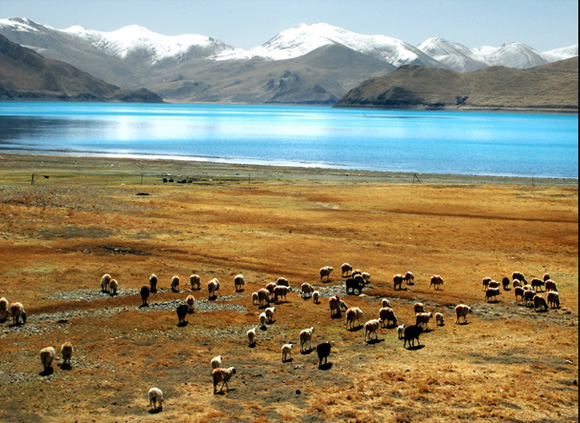 8 Days Nyingchi Peach Blossom Festival Tour
8 Days Nyingchi Peach Blossom Festival Tour 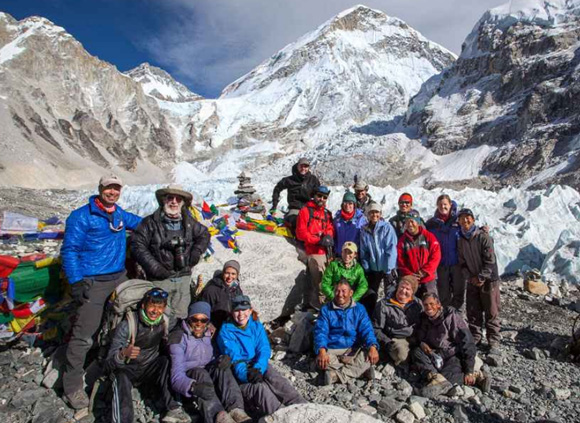 9 Days Bhutan Natural and Cultural Tour
9 Days Bhutan Natural and Cultural Tour 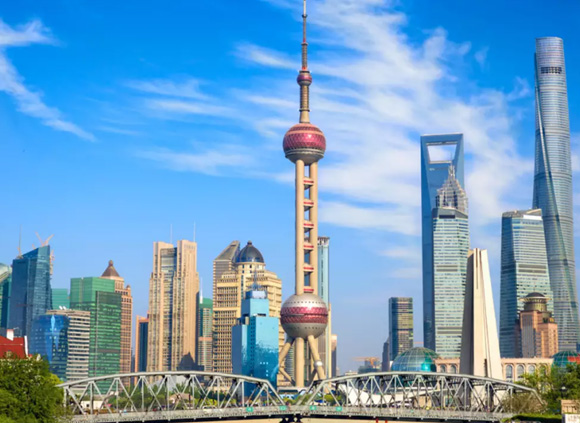 5 Days Short Lhasa Tour from Nepal by Flight
5 Days Short Lhasa Tour from Nepal by Flight 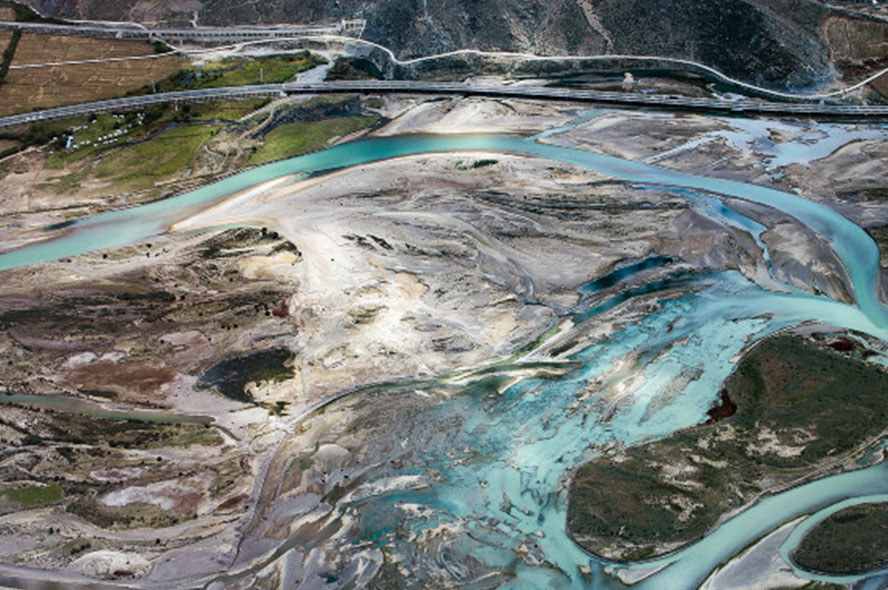 6-Day Tibet Holy City Train Tour
6-Day Tibet Holy City Train Tour 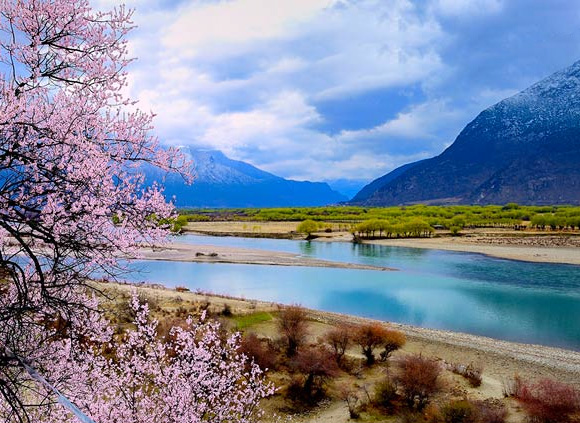 6 Days Lhasa and Ganden Monastery Leisure Trek Tour
6 Days Lhasa and Ganden Monastery Leisure Trek Tour 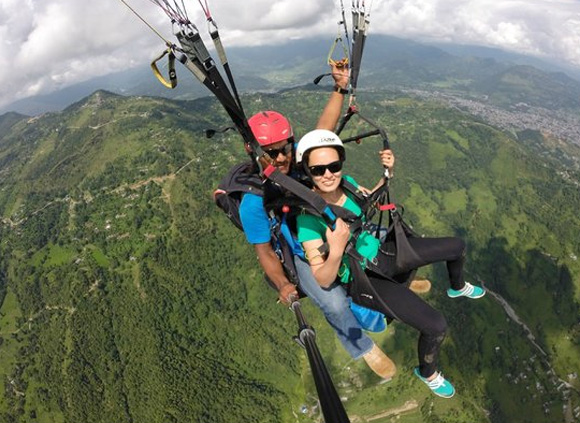 15 Days Lhasa Kathmandu Overland Tour from Beijing
15 Days Lhasa Kathmandu Overland Tour from Beijing 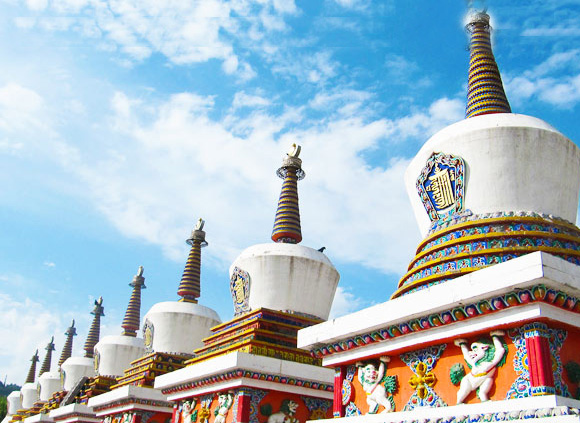 5 Days Lhasa Winter Tour to Ganden Monastery
5 Days Lhasa Winter Tour to Ganden Monastery 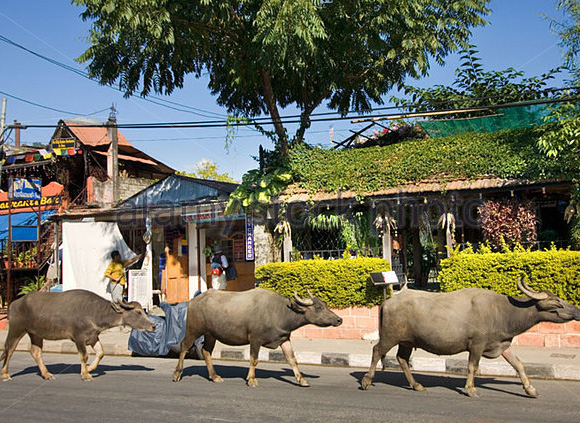 9-Day Family Holiday in Nepal
9-Day Family Holiday in Nepal  8 Days Lhasa to Namtso Lake Biking Tour
8 Days Lhasa to Namtso Lake Biking Tour 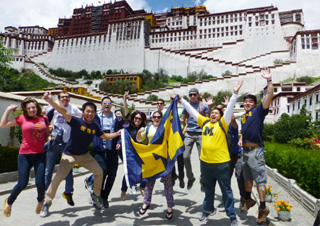
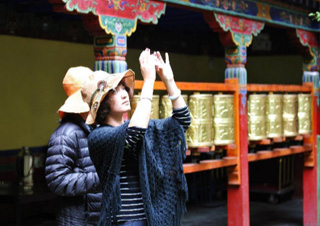
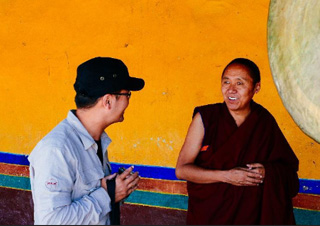
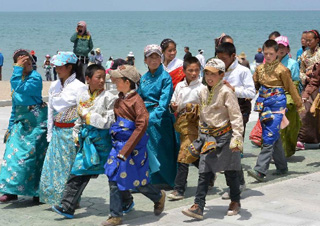
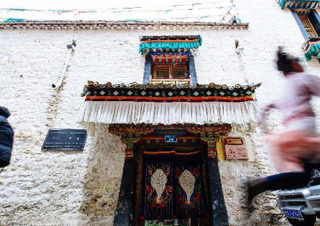
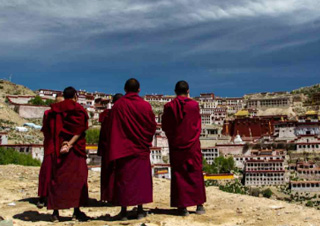
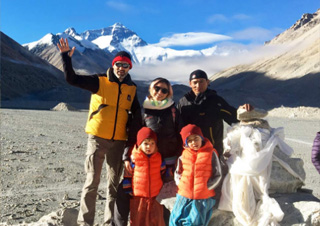
 Data in submission...
Data in submission...


